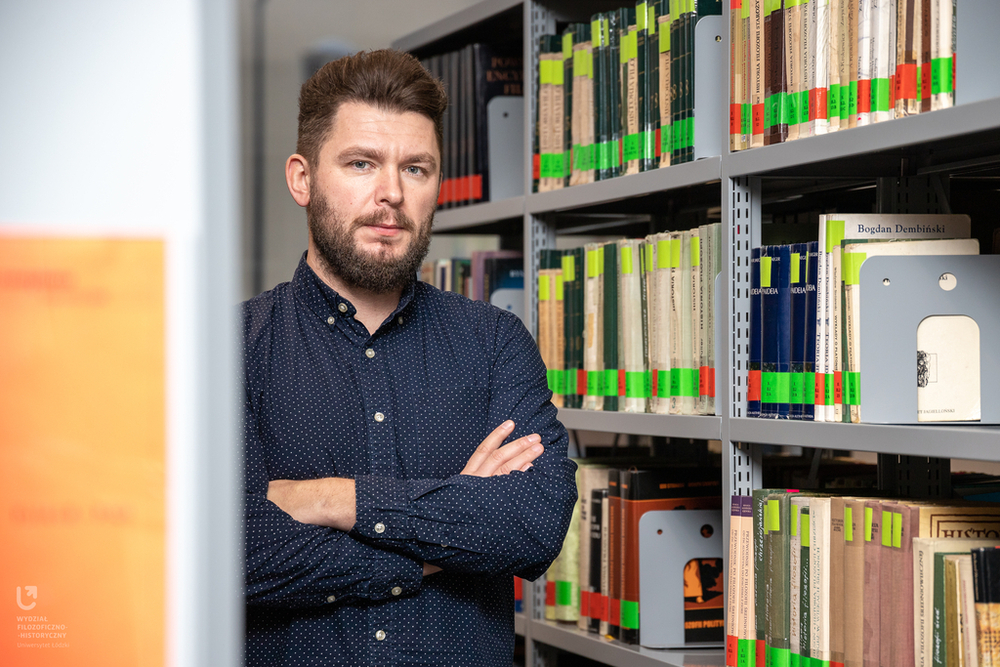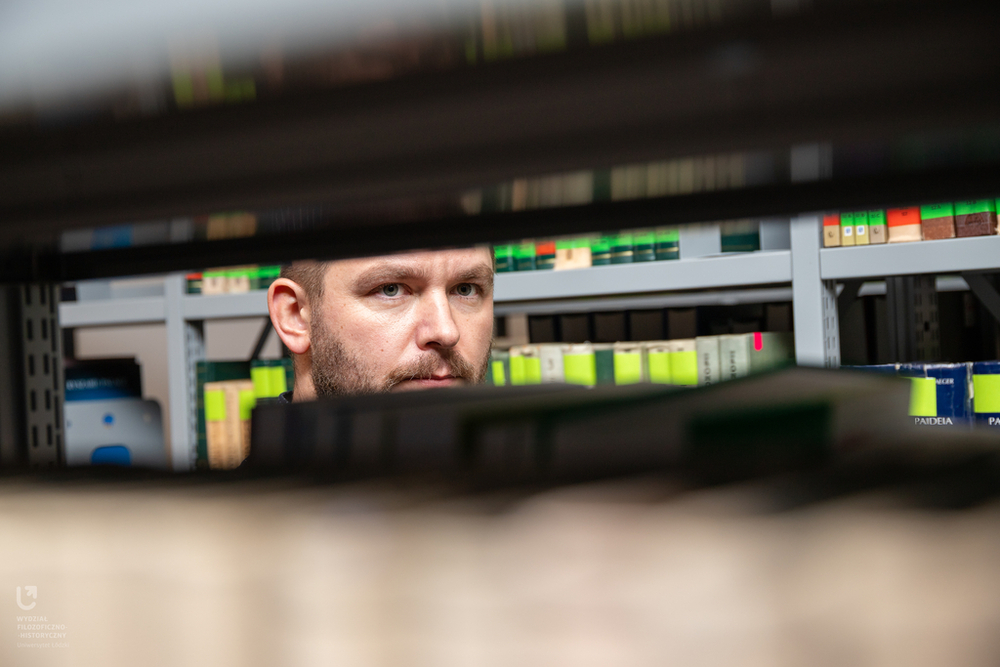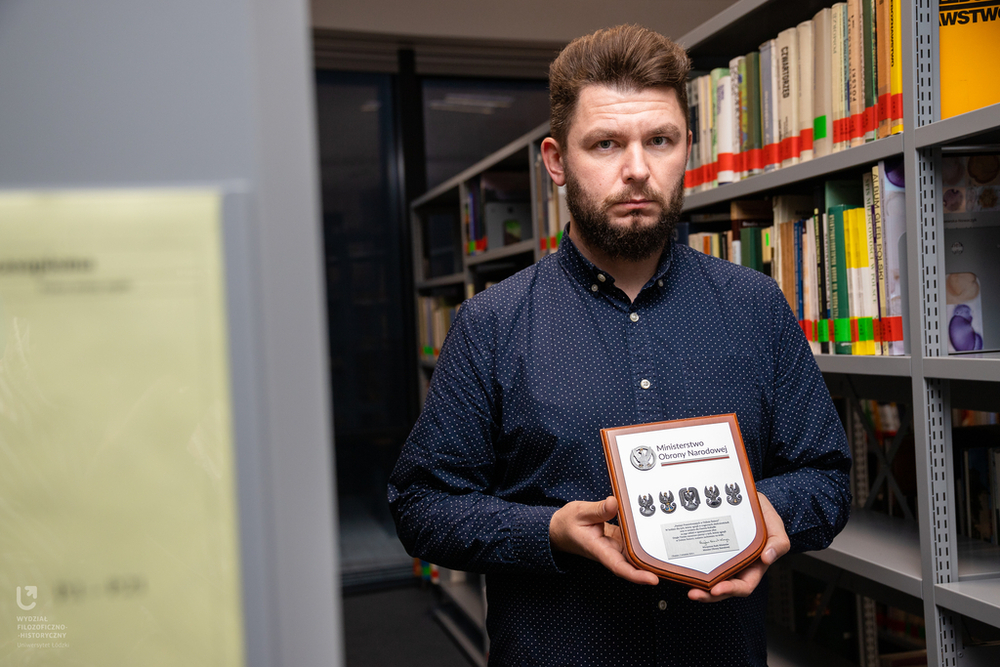
Tell us a few words about yourself
My name is Dawid Kobiałka, I am an archaeologist and a cultural anthropologist. I currently work at the Institute of Archaeology of the University of Lodz, where I have been implementing an interdisciplinary and international research project on the German mass crimes of autumn 1939 in Gdańsk Pomerania and the social memory of them.
Why archaeology? When did the idea come about?
I have been interested in history and archaeology for as long as I can remember. I had the idea to study archaeology already at high school.
What do you like most about your job?
The so-called "field" is what is of key importance in the work of an archaeologist. Personal participation and management of fieldwork allows for a better understanding of the subject of research and, crucially, to describe the research being carried out from the perspective of one's own experiences, emotions and reflections. Archaeology is not simply digging in the ground for "new" artifacts. Archaeology is about conducting scientific research, which must be translated into textual form (scientific and popular science publications).
What is contemporary archaeology?
Contemporary archaeology is a branch of archaeological research whose subject of research are broadly understood material remains and landscape changes related to events from the 20th century (and even the 21st century). It is based on a simple conviction that not everything has been recorded in the form of archival documents and that the use of archaeological research methods and tools allows us to supplement, verify and enrich our knowledge about people, things, events, etc. from several years or centuries ago. Due to the difficult and painful recent history of our country and nation, contemporary archaeology in Poland is mainly developing in the context of events from World War II (and the post-war communist terror). The role and significance of the Institute of Archaeology of the University of Lodz in this field should be noted – it is the only institution of its kind in the country and Europe, within which several scientists work developing this important branch of archaeology.

What are the greatest challenges associated with studying such “fresh” traces of the past in contemporary archaeology?
Contemporary archaeology enables us to uncover and discover what was supposed to be hidden forever. The research on mass graves from World War II is an excellent example. Contemporary archaeology is important and necessary – it carries out work of historical, social and cultural significance. I am very often asked in Poland and abroad about the emotions associated with this type of work and how stressful it is. I usually answer that kneeling in front of a mass grave knowing that you will die in a moment is stressful. Archaeological research on mass crime sites has a “missionary dimension” – which is its most important component. This is simply important research and everyone involved in fieldwork is aware of this.
Is there still much to discover? What are the prospects for the development of this field in Poland and worldwide?
It can be said that Poland as such is one big crime scene from the period of World War II. We are only at the beginning of the development of contemporary archaeology in our country. It has enormous scientific and commemorative potential, as has already been demonstrated by Polish archaeologists who have been implementing important and necessary scientific projects in the field of contemporary archaeology in recent years.
Can you please tell us a few words about the research project in the Death Valley in Chojnice? Where did the idea to search there come from?
The project "An archaeology of the Pomeranian Crime of 1939" is not just about the Death Valley, but generally about execution sites from the autumn of 1939 in Gdańsk Pomerania. There are about 400 such known sites, where the Germans murdered – as can only be generally estimated – about 30-35 thousand human beings. Death Valley in Chojnice is one of these 400 sites. It is a special place for me, because I was born and raised in Chojnice. I played in the Death Valley as a little boy.

What were the main goals of the project?
The project had several key goals. An attempt to find unknown and unmarked mass graves from the autumn of 1939 in Gdańsk Pomerania was one of the most important goals. The consequence of this was to reconstruct, based on various sources, the methods of organising and conducting mass murders and their cover-up - both in the autumn of 1939 and in the second half of 1944, when the so-called Aktion 1005 took place in Gdańsk Pomerania. It consisted in special commandos under the supervision of the SS locating mass graves from 1939, then exhuming the bodies of the victims and burning them on cremation pyres.
What new facts have been discovered thanks to the research?
In recent years, the remains of about 700 people murdered by Germans and officers of the Third Reich have been found and exhumed in the Death Valley alone. The research has allowed mass graves to be located. Human remains, artifacts, samples for specialist analyses shed new light on the way mass murders were organised and how they were covered up. It has been possible to establish the identity of some of the victims who were murdered near Chojnice. This is especially important for families who, after 80 years, learned what really happened to their relatives.
Was the size of the discovery a surprise to your team?
The archival materials clearly showed that somewhere near Chojnice there are still unexhumed mass graves from the period of World War II. Finding them was not an easy task. Nevertheless, a properly selected research team, time and secured financial resources allowed for systematic checking of subsequent points in the surrounding fields, meadows and forested areas. Their result is the finding of approx. 700 people whose remains were buried in a state burial. It took place on 2 September 2024 in Chojnice. It was probably the largest event of this kind in the country and beyond.
How do the research results change our knowledge of this place and the events that took place there?
From a social perspective, the Death Valley was used to be seen as a symbolic place where the Germans murdered several hundred people during World War II. It was not known exactly where the executions took place and where the mass graves were located. Archaeology changed that. It is a real, actual, "true" place of mass crimes, where the bodies of several hundred people were hidden.
What were the biggest challenges while conducting this research?
I would say time and money were the biggest calleges. The bodies of the victims were hidden so that they would never be found. The research area that interested us in Chojnice is a 1.5 km long and 400 m wide strip of land. It is impossible to find graves in such a landscape during several days of excavations. The research in Chojnice took a total of 5 years.
How were different scientific disciplines integrated during this project?
In the case of the mass crimes of the autumn of 1939 in Gdańsk Pomerania, one cannot simply rely on historical sources. Most of the documentation was destroyed in November 1939. Therefore, in order to say "something new" about these crimes, we rely on archaeology, physical and forensic anthropology, geochemical research, archaeobotany, ethnography, etc. The combination of various scientific disciplines allows for placing the crimes and their multidimensional legacy in a different framework.
What are the plans for further research and activities related to Death Valley?
We are currently at the stage of developing individual categories of data. Importantly, the work being carried out is a component of the official investigation conducted by prosecutor Tomasz Jankowski from the Investigative Division of the Institute of National Remembrance in Gdańsk into the mass crimes committed in the Valley of Death. We also have several ideas for various types of scientific and commemorative activities, but I would rather not talk about the details.

What are your further research plans?
We are carrying out further fieldwork already in May 2025. We are going to work with the research team at the National Memorial in Łambinowice searching for the graves of Polish soldiers who died in Stalag VIII B (344) Lamsdorf during World War II and Warsaw insurgents who also stayed in Lamsdorf in the second half of 1944 in July 2025.
Finally, I would like you to say a few words to those who are just starting their adventure with studying archaeology.
Archaeology can be fascinating. It allows for the implementation of research that can have important social and cultural significance.
ALL EPISODES AS PART OF THE SERIES
Interview conducted by: Mateusz Kowalski
Photos: Mateusz Kowalski
Video: Stefan Brajter, Michał Gruda
